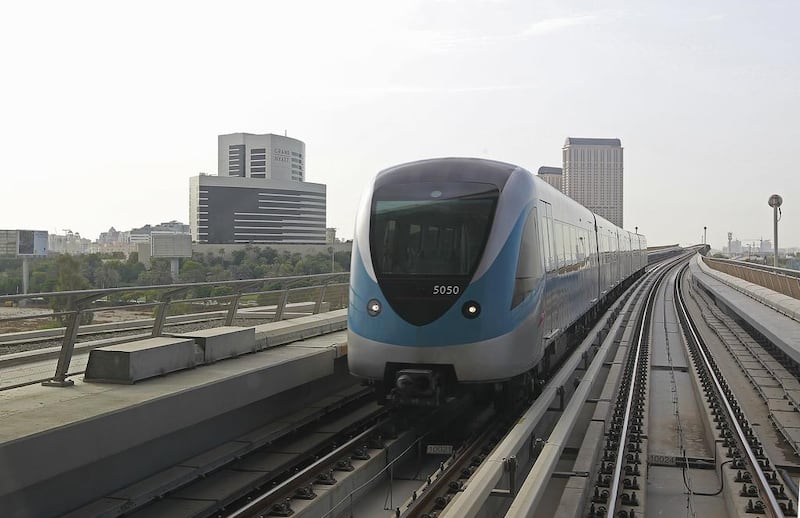The countries of the GCC are undergoing impressive transformations that are shaping the future of their countries, and unlocking potential through ambitious policy, large-scale investment and a capacity for innovation.
But this is being accomplished in an increasingly tight economic environment – particularly in terms of government budget constraints. Nonetheless, governments across the region are ploughing ahead with large-scale strategic projects in sectors such as transportation, infrastructure and energy, as they pursue deadlines and diversification programmes.
In Dubai, to use just one example, over $8 billion in investment has been allocated for transport and infrastructure projects in and around the Expo 2020 site so far. The Dubai 2020 Urban Master Plan envisions a thriving metropolitan district connected by modern infrastructure - such as the $2.9bn Dubai Metro Red Line Extension, the $32bn Al Maktoum International Airport and $390m in planned road works.
MEED has calculated that there was a $2 trillion pipeline of as yet un-awarded projects across the GCC, in addition to $3.4tn worth of projects planned or underway in the same region - a 10.7 per cent increase year-on-year from 2017 to 2018.
Perhaps the most ambitious of these projects is NEOM, a $500bn planned mega city on Saudi Arabia’s Red Sea coast. The 26,500 square kilometre zone includes a bridge spanning the Red Sea, connecting the proposed city to Egypt and the rest of Africa. Some 10,000 square miles (25,900 square kilometres) have been allocated for the development of an urban area that will extend into Jordan and Egypt.
These figures illustrate the level of activity taking place across the region. But how can these large financing needs still be met efficiently in an environment of flagging liquidity?
________________
Read more:
[ UK opens dedicated Dubai office with £9bn fund for UAE projects ]
[ Dubai completes metro expansion's $2.45bn financing ]
________________
The answer may lie with Export Credit Agency-backed financing. ECAs are government-affiliated institutions, found primarily in countries that are export-friendly, like the US, Germany, or - in the context of our own agency – Italy.
With the worsening credit environment, international banks may hesitate to fund large projects without the benefit of credit risk mitigation. But ECAs, effectively acting as an insurer, are able to cover – through guarantees from their governments – the export and supply of domestic goods or contractors, enabling present and future projects in the region to access much larger long term facilities.
High-profile government projects that have benefitted from ECA funding in the past include the Al Sufouh tramway project in Dubai, which received loan guarantees from ECAs in France and Belgium in support of construction contracts won by their domestic companies.
Moving forward, there are a number of projects in the UAE that have been earmarked for debt funding backed by international ECAs. These include the expansion of both the Al Maktoum International Airport, as well as the $2,45bn RTA Metro Red Line project connecting the World Expo 2020 site. This project will benefit from a 17-year $1.42bn loan guaranteed by the French and the Spanish ECAs, partly re-insured by Italy’s ECA, SACE. Overall, the government is expected to require roughly $7bn for projects linked to the Expo 2020, and ECA-backed financing is likely to represent a large part of this.
At SACE, we have seen a growth in demand for ECA-backed financing firsthand. We opened our office in Dubai two years ago, and in that time, have seen our portfolio in the MENA Region grow from €4.4bn to €12bn. This includes a number of recent investments such as a $300 million credit facility for the supply contracts for the completion of the first phase of the upcoming Meydan One Mall in Dubai and a $625mloan in favour of the Kuwait National Petroleum Company. All of this reinforces Italy’s historic position as an exporting country, with a lot of this activity being the result of our government’s focus to support exports and the broad internationalisation of Italian companies. But none of it would be possible if not for the respect that governments in the region, and indeed around the world, have for the breadth of Italian industrial expertise – across sectors like infrastructure and also oil and gas, technology, and construction, in addition to the more popular sectors like fashion, food and design.
In this new environment, ECAs will play an important role in large-scale financing of regional projects. The extent of their participation is difficult to determine at this juncture, but it is clear that if governments are committed to achieving their ambitions, a variety of financing solutions will be required – with ECAs a significant part of this equation.
Alessandro Decio is the chief executive officer of Italian Export Credit Agency SACE.






